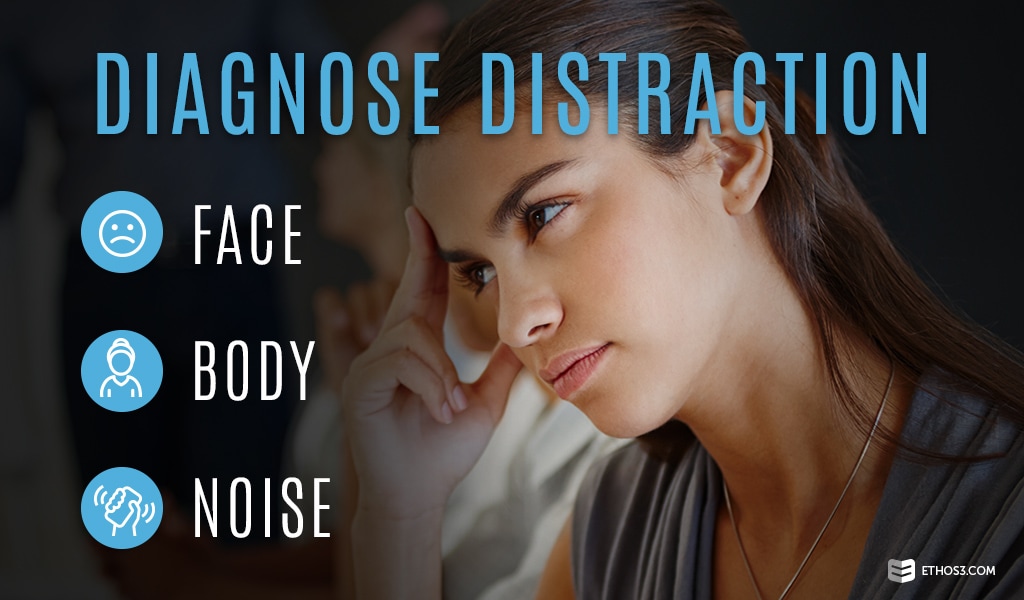My cousin and I are one year apart. Growing up, we were inseparable. We would construct the most elaborate Barbie houses – communities, really – and tell each other stories before falling asleep. In church, when the pastor’s message wasn’t quite speaking to us, we’d pick a word, usually a holiday like Christmas or Halloween, and compete to see who could create the most words with those letters. Clearly, we were master distractors. As a presenter, you would not want us in your audience. Let’s learn the signs of distraction and ways to hop back on track.

Facial Expression
An individual wears their distraction on their sleeve – and their face. From licking or biting his or her lips to moving his or her head back and forth, a distracted person cannot keep still.
Body Language
Constant movement transfers from the face to the body, as a distracted audience member plays with his or her hair or messes with the clothes he or she is wearing. If your event is taking place in a room that has desks, distraction can be spotted by the sound of fingers tapping furiously on the hardened surfaces.
Speech and Noise
The most noticeable sign of a distracted group, however, is chit chat. If you can’t seem to hold the attention of your audience, you’ll need to recalibrate your course of action.
Reversing a distracted audience is definitely doable. Experiment with the 2 strategies outlined below.
1. Switch up the pace
Play with variations in tone and pacing. Go through an agenda slide quickly, then slow down the narrative with your speech through storytelling. On average, maintain a speaking pace of 120-140 words per minute. It’s the most effective speed for listeners. But, experiment with speaking slower or faster to emphasize important points.
2. Consider alternative methods of distributing content
Perhaps your usual way of conveying your message is not suitable for the content. If you are forced to drag out the explanation of particular points to fill a time slot, you may want to try formatting the entire message for video or audio. Research shows that video increases the likelihood of a person buying what you are selling by 85%. So, the lesson here is to always be brainstorming avenues for visual and auditory usage. Display a video online through your website or social media accounts. Or, at the very least, leverage video or audio in your presentation by incorporating it into your opening or closing.
If you’ve been forced to deal with distraction, it means that your content as it is doesn’t have much to offer audiences in the way of engagement. Practicing your presentation delivery and ensuring that a presentation is the best method of dissemination of your content is a perfect place to safeguard against distraction. Want to learn more about meeting audience needs? Review the following resources:
Write the Best Presentation Opening Line
